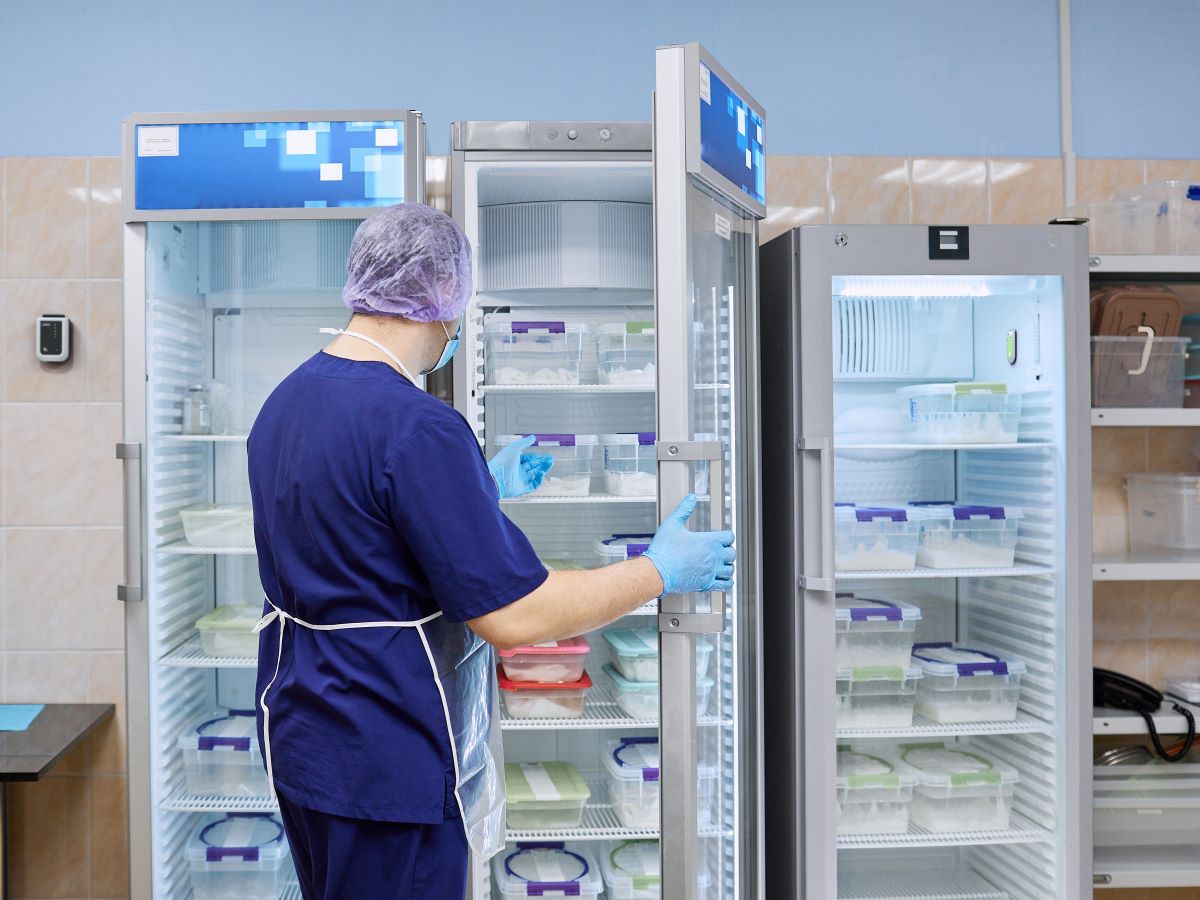In the ever-evolving landscape of food safety, the introduction of online temperature monitoring systems has emerged as a pivotal advancement. With foodborne illnesses affecting millions globally each year, ensuring that food products are stored and transported at safe temperatures is crucial. This article explores how online temperature monitoring can revolutionise compliance with food safety regulations, enhance operational efficiency, and ultimately protect consumers.
The Importance of Temperature Control in Food Safety
Temperature control is a fundamental aspect of food safety management. The growth of harmful bacteria, which can lead to foodborne illnesses, is significantly influenced by temperature. According to the World Health Organization, improper temperature control is a major contributor to foodborne disease outbreaks.
Understanding the Temperature Danger Zone
The temperature danger zone, typically defined as between 5°C and 60°C, is where bacteria can flourish. Keeping food out of this zone is essential for preventing spoilage and ensuring consumer safety. Traditional methods of monitoring temperature often rely on manual checks, which can be inconsistent and prone to human error. In contrast, modern technology has introduced innovative solutions such as digital thermometers and smart monitoring systems that provide real-time data, allowing for more precise temperature management. These advancements not only enhance food safety but also help streamline operations in commercial kitchens and food storage facilities.
Regulatory Compliance and Its Challenges
Food businesses are subject to strict regulations regarding temperature control, including guidelines from local health authorities and food safety standards. Compliance with these regulations is not merely a legal obligation; it is a moral responsibility to protect public health. However, maintaining compliance can be challenging, particularly for businesses with large inventories or multiple storage locations. The complexity of these regulations can often lead to confusion, especially for smaller establishments that may lack the resources for comprehensive training. Additionally, the consequences of non-compliance can be severe, ranging from hefty fines to the potential closure of a business, underscoring the importance of effective temperature management systems. Regular training sessions for staff and the implementation of standard operating procedures can greatly assist in navigating these challenges, ensuring that everyone involved understands their role in maintaining food safety standards.
What is Online Temperature Monitoring?
Online temperature monitoring refers to the use of digital systems that continuously track and record the temperature of food products in real-time. These systems often utilise sensors connected to the internet, allowing for instant data transmission and remote monitoring. This technology is particularly invaluable in industries such as food service, pharmaceuticals, and logistics, where maintaining specific temperature ranges is critical to ensuring product safety and quality.
How It Works
Online temperature monitoring systems typically consist of sensors placed in refrigeration units, freezers, or other storage areas. These sensors collect temperature data and send it to a centralised platform, where it can be accessed via a computer or mobile device. Alerts can be set up to notify staff if temperatures fall outside safe ranges, enabling immediate corrective actions. The integration of these systems with existing inventory management software can further streamline operations, ensuring that temperature-sensitive items are monitored throughout their entire supply chain journey.
Key Features of Online Monitoring Systems
Modern online temperature monitoring systems come equipped with various features designed to enhance usability and effectiveness. Some of the key features include:
- Real-Time Alerts: Instant notifications when temperatures deviate from the set range.
- Data Logging: Automatic recording of temperature data for compliance and auditing purposes.
- Remote Access: Ability to monitor conditions from anywhere, providing flexibility and peace of mind.
In addition to these features, many systems now offer advanced analytics capabilities, allowing businesses to analyse historical temperature data to identify trends and potential issues before they arise. This proactive approach not only helps in maintaining compliance with health and safety regulations but also optimises operational efficiency. Furthermore, the user-friendly interfaces of these platforms often include visual dashboards that present data in an easily digestible format, making it simple for staff to interpret and act upon the information provided.
Another significant advantage of online temperature monitoring is its ability to integrate with other smart technologies within a facility. For instance, when paired with automated refrigeration systems, these monitoring solutions can adjust temperatures autonomously in response to detected anomalies, thereby reducing the risk of human error. This interconnectedness not only enhances the reliability of temperature control but also contributes to energy savings, as systems can operate more efficiently based on real-time data.

Benefits of Online Temperature Monitoring
The implementation of online temperature monitoring systems offers numerous benefits that extend beyond mere compliance. These advantages can lead to improved operational efficiency, cost savings, and enhanced consumer trust.
Enhanced Compliance
One of the most significant advantages of online temperature monitoring is its ability to simplify compliance with food safety regulations. With automated data logging, businesses can maintain accurate records without the need for manual entry, reducing the risk of errors. This not only helps in meeting regulatory requirements but also facilitates easier audits and inspections. Visit https://www.health.gov.au/topics/food-and-nutrition/about/food-standards-and-safety to get more about food standards and safety.
Operational Efficiency
Online monitoring systems can lead to increased operational efficiency by reducing the time spent on manual checks. Staff can focus on other critical tasks, knowing that temperature is being monitored continuously. Additionally, the ability to access data remotely allows for quicker decision-making, particularly in situations where immediate action is required.
Cost Savings
While the initial investment in an online temperature monitoring system may seem significant, the long-term cost savings can be substantial. By preventing spoilage and waste due to temperature fluctuations, businesses can protect their bottom line. Moreover, the reduction in manual labour associated with temperature checks can lead to further savings.
Case Studies: Success Stories in Online Temperature Monitoring
Several Australian businesses have successfully integrated online temperature monitoring systems into their operations, resulting in notable improvements in food safety compliance and efficiency.
Case Study 1: A Large Supermarket Chain
A prominent supermarket chain in Australia implemented an online temperature monitoring system across its stores and distribution centres. The system provided real-time alerts for temperature deviations, allowing staff to take immediate action. As a result, the chain reported a significant decrease in food spoilage and an improvement in compliance with food safety regulations.
Case Study 2: A Local Restaurant
A local restaurant faced challenges in maintaining consistent temperature control for its perishable items. By adopting an online monitoring system, the restaurant was able to track temperatures in real-time and receive alerts when issues arose. This led to enhanced food safety practices and increased customer confidence, ultimately boosting sales.
Implementing Online Temperature Monitoring: Best Practices
For businesses considering the transition to online temperature monitoring, several best practices can help ensure a successful implementation.
Choosing the Right System
Selecting the appropriate online temperature monitoring system is crucial. Businesses should assess their specific needs, including the size of their operation, the types of products being stored, and budget constraints. It is advisable to choose a system that offers scalability, allowing for future expansion as the business grows.
Training Staff
Even the most advanced technology is only as effective as the people using it. Providing comprehensive training for staff on how to use the online monitoring system is essential. This includes understanding how to interpret data, respond to alerts, and maintain the equipment.
Regular Maintenance and Calibration
To ensure the accuracy of temperature readings, regular maintenance and calibration of sensors are necessary. Establishing a routine for checking and servicing equipment will help maintain the reliability of the monitoring system. Check out more about How Digital HACCP Software Improves Food Safety Monitoring.
Future Trends in Temperature Monitoring Technology
The field of temperature monitoring technology is continually evolving. Emerging trends are likely to shape the future of food safety compliance.
Integration with IoT and AI
The integration of Internet of Things (IoT) technology and artificial intelligence (AI) into temperature monitoring systems is expected to enhance their capabilities. IoT devices can provide even more granular data, while AI can analyse trends and predict potential issues before they arise, allowing businesses to take proactive measures.

Blockchain for Traceability
Blockchain technology is gaining traction in the food industry, offering enhanced traceability and transparency. By combining blockchain with online temperature monitoring, businesses can create a comprehensive record of the entire supply chain, ensuring that food safety standards are upheld at every stage.
Conclusion
Online temperature monitoring represents a significant advancement in the quest for food safety compliance. By automating temperature checks and providing real-time data, businesses can enhance compliance, improve operational efficiency, and reduce costs. As technology continues to evolve, the potential for online monitoring systems to further revolutionise food safety practices is immense. Embracing these innovations not only protects consumers but also fosters a culture of safety and accountability within the food industry.


